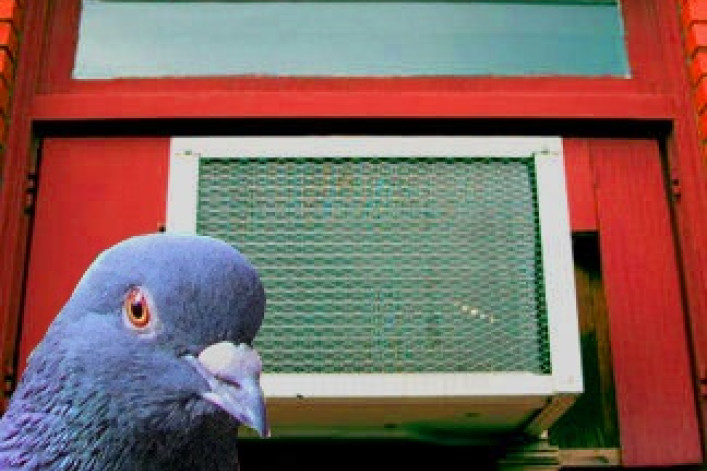Why you mite not want to use your a/c just yet

With the mercury stirring from its seasonal sloth, you may soon be tempted to power up your air conditioner.
But think again if you have pigeons or other birds nesting there: Though some people find roosting pigeons a laughing matter, the birds' dried-up droppings can harbor diseased spores which pose a danger to compromised immune systems when blown through your apartment.
And avian squatters often carry bird mites—tiny (.7mm) insects whose bites are frequently confused with those of bed bugs.
Even some pest control technicians can be initially misled, especially when confronted with a panicking client.
“The solution is removal of the nests, repeated vacuuming—throw the bag out—and possible treatment with an appropriate non-residual insecticide like pyrethrum or better yet dry steam," says Gil Bloom of Standard Pest Management in Queens.
Bloom provided BrickUnderground with a rundown of creatures that may make you say bed bug but are actually not.
- Spider beetles: Used to be mistaken for ticks at the height of Lyme disease paranoia. Adults are 1.5mm-3.5mm long with dark reddish-brown, shiny, globular abdomens. They don’t bite and don’t really care about humans.
- Psocids a.k.a. booklice: These aren’t actually sucking lice and they feed on mold and mildew rather than you. They’re small, transparent grayish-white insects about 1/32”-3/16” long, easily confused with toddler-stage bed bugs. Frequently confused with first stage bed bugs.
- Roach nymphs: Teenage roaches. The antennae are much longer than bed bugs and they are more brown than red, but they raise their share of false and expensive alarms. Their, ahem, fecal material looks at first like a bed bug’s, but when you rub a damp cotton swab on the spots, they won’t turn red like blood-fed bed bugs.
- Carpet beetles and their larvae: Adults are 1/3” to 3/16” long and black, and larvae can be as long as 5/16”. Adults can look like bed bugs to untrained eye and the larvae can irritate your skin. The beetles are most common in early spring and can be found on window sills as well as outdoors hunting down pollen.
“The take-home message here is that anytime you suspect a pest, getting a sample is always a good idea,” says Bloom.
Related posts:
Pigeons having sex on an air conditioner in New York
Bye-bye birdie: The poop on pigeon control
The neighbors have a right to know about your bed bugs
Bed-bug sniffing dogs: Dont't fall for false positives
Co-op hair-raiser: The $250,000 bed bug bill
New clues on spread of bed bugs through apartment buildings




























